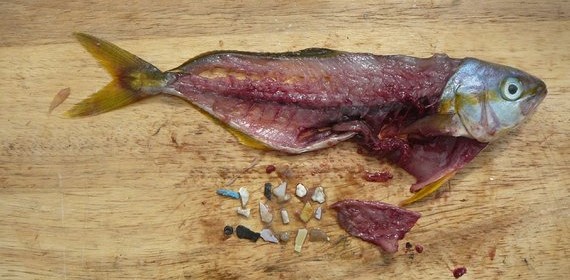The plastic in your fish

Scientists have long suspected that waste dumped into the ocean would ultimately find its way into the seafood that ends up on dinner tables. A new study provides evidence that this is more than just a theory. After analyzing fish caught off the coasts of California and Indonesia and sold in local markets, researchers found 25 percent contained man-made debris.
All of the fragments found in Indonesian fish were plastic, while textile fibers accounted for 80 percent of the debris found in fish from California. The study’s authors say this difference reflects the waste management strategies in each region. Indonesia often dumps garbage directly onto beaches and into rivers.
The United States has more advanced waste-processing systems, including plastic recycling, but effluent from washing machines sent to wastewater treatment plants is laden with synthetic fibers. In each case, the waste is becoming part of marine habitats. “This is a wake-up call,” says the study’s author, Chelsea Rochman, warning that waste dumped into oceans “might be coming back to haunt us through the food chain.” So far, researchers have found plastic and fiber in the fishes’ guts, not their flesh. But they noted that further research is needed.

 Print
Print